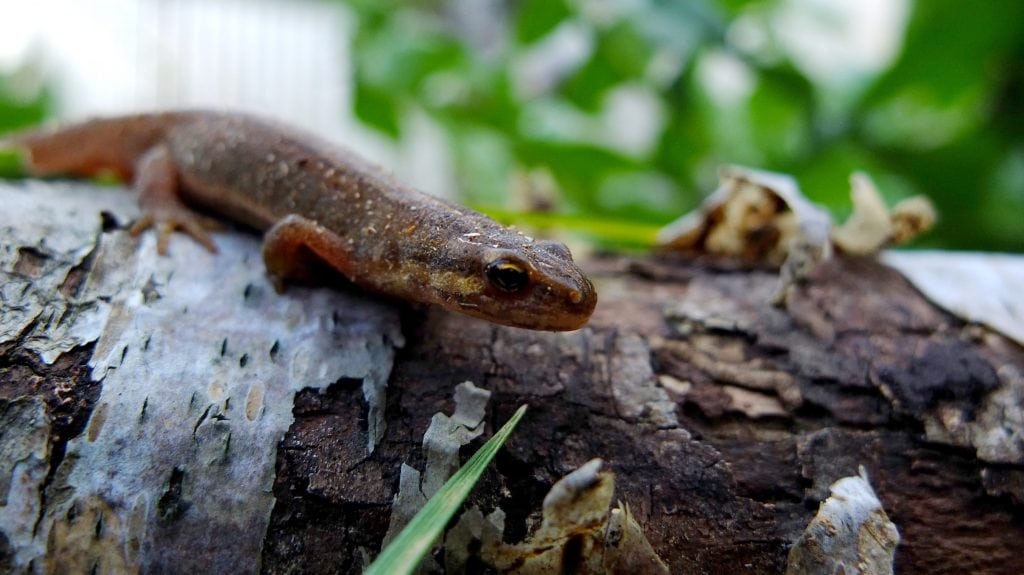All newts are amphibians. The Common Newt has the widest distribution of our native newts. Common newts can be found in a variety of habitats outside the breeding season, inhabiting deciduous woodland, wet heathland, bogs, marshes, gardens, parks and farmland.
They prefer standing water with plenty of weeds, such as lake margins, ponds and ditches, in which to breed.
Common newts feed upon insects, caterpillars, worms and slugs which is their main diet on land, while in the water, insects, crustaceans, mollusks and tadpoles are eaten. Newts do not use their tongues to catch their prey in the water, instead, they have tiny teeth which they use to grab onto their prey. Newts tend to hunt for their prey near the surface of the water.

Common Newts emerge from hibernation in March, they breed through to May and generally the adult newts leave the water in July. They are one of the most terrestrial of the newts in Europe. When newts surface from the water for air, they make a characteristic ‘popping’ sound. Newts are nocturnal animals and sleep under stones or compost heaps during the day.















